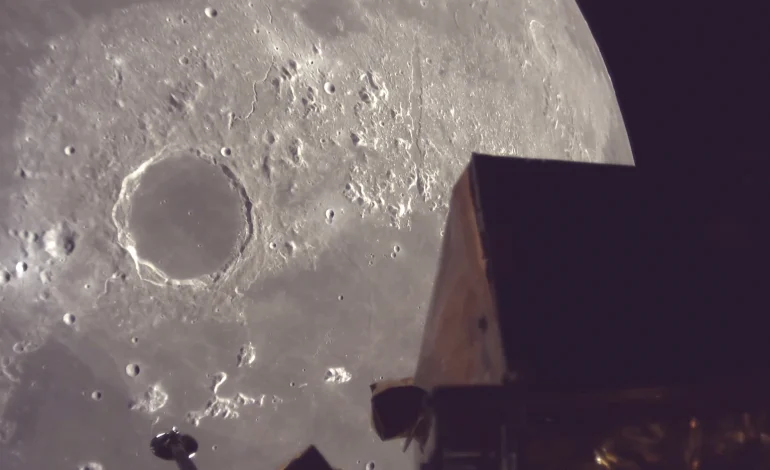A faulty laser navigation tool has been identified as the cause of a recent crash landing by a Japanese lunar lander, according to officials from Tokyo-based space company ispace, the Associated Press reports.
The announcement, made on Tuesday, marks the company’s second failed attempt to land a spacecraft on the moon in two years.
The lander, named Resilience, was targeting the Mare Frigoris region near the moon’s north pole when it lost communication during its final descent earlier this month. NASA’s Lunar Reconnaissance Orbiter later confirmed the lander and its companion mini rover had crashed and were now debris at the intended landing site.
Ispace officials attributed the failure to the delayed activation of Resilience’s laser range finder, a key instrument used to measure altitude during descent. As a result, the lander descended at a dangerously high rate of about 138 feet (42 meters) per second before losing contact and crashing approximately five seconds later.
This crash follows ispace’s previous failed landing attempt in 2023, which was caused by a software error during the final phase of descent. In both missions, issues emerged during the most critical moments of landing.
Of the seven recent moon landing attempts by private companies worldwide, only one has achieved complete success: Texas-based Firefly Aerospace. Its Blue Ghost lander successfully touched down in March after launching alongside Resilience on a SpaceX rocket from Florida in January.
To date, only five nations—the former Soviet Union, the United States, China, India, and Japan—have successfully landed spacecraft on the moon. Among them, only the United States has sent astronauts, during NASA’s Apollo missions over 50 years ago.
Despite consecutive setbacks, ispace is moving forward with future missions. The company plans a third landing attempt in 2027, in collaboration with NASA, and a fourth mission is already in development. Company leaders estimate that upgrades and additional testing will add approximately 1.5 billion yen (over $10 million USD) to the project’s development costs.
Ispace CEO and founder Takeshi Hakamada emphasized the company’s determination to learn from its failures and continue progress.
“We have not stepped down in the face of setbacks,” Hakamada said. “We’re firmly taking the next step toward our future missions.”










The latest news in your social feeds
Subscribe to our social media platforms to stay tuned